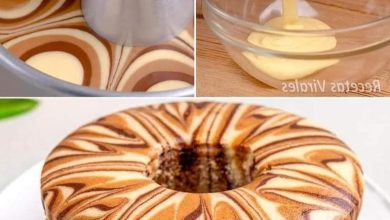
ADVERTISEMENT
Crispy Potato Patties
Ingredients:
– 3 cups mashed potatoes (preferably chilled)
– 1 cup grated cheddar cheese
– 1/4 cup all-purpose flour
– 1/4 cup green onions, finely chopped
– 1/4 cup carrots, finely grated
– 1 egg
– Salt and pepper to taste
– 1 teaspoon garlic powder
– 1 teaspoon onion powder
– 2 tablespoons vegetable oil (for frying)
ADVERTISEMENT
Instructions:
1. **Prepare the Potato Mixture:**
– In a large mixing bowl, combine the mashed potatoes, grated cheddar cheese, flour, green onions, grated carrots, egg, salt, pepper, garlic powder, and onion powder. Mix until all ingredients are well combined.
2. **Form the Patties:**
– Using your hands, form the potato mixture into small patties, about 2-3 inches in diameter and 1/2 inch thick.
3. **Preheat the Skillet:**
– Heat the vegetable oil in a large non-stick skillet over medium heat.
4. **Cook the Patties:**
– Carefully place the patties in the skillet, ensuring not to overcrowd the pan. Cook for about 3-4 minutes on each side, or until they are golden brown and crispy.
ADVERTISEMENT
5. **Drain and Serve:**
– Remove the patties from the skillet and place them on a paper towel-lined plate to drain any excess oil.
6. **Serving Suggestions:**
– Serve the potato patties hot, garnished with additional chopped green onions or herbs. They can be enjoyed as a side dish, appetizer, or snack.
Enjoy your crispy and delicious potato patties!
ADVERTISEMENT




